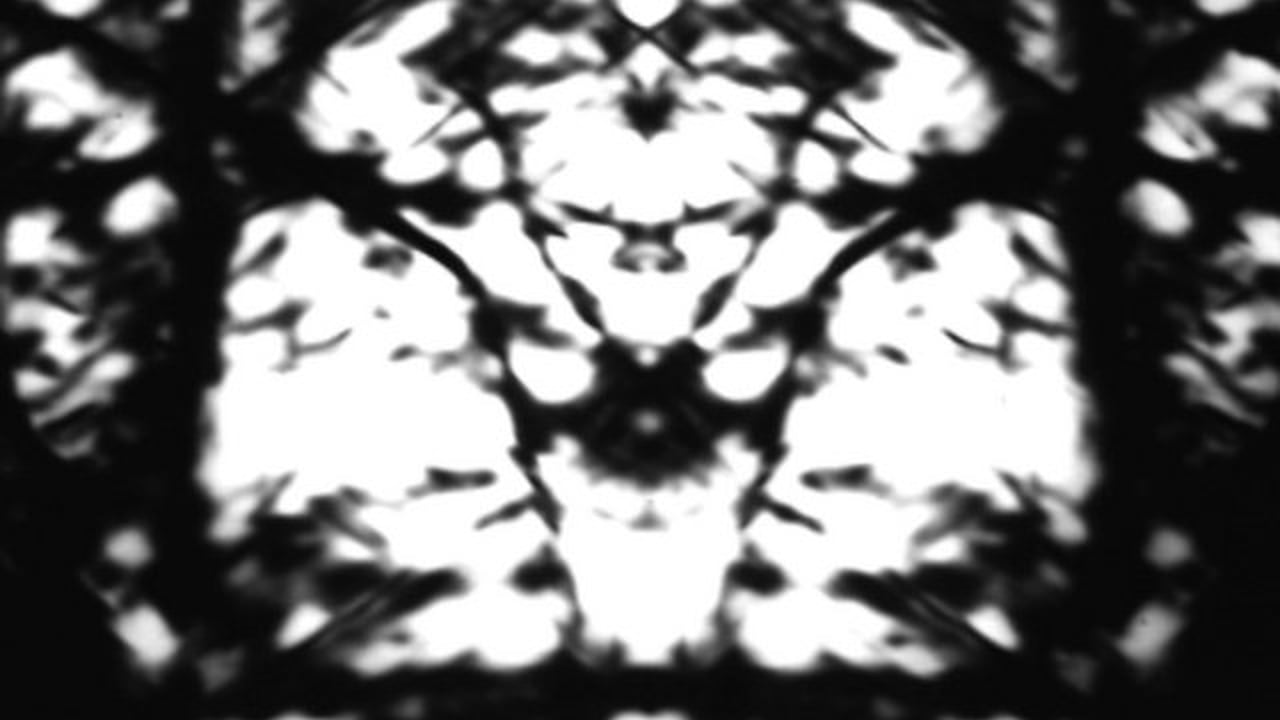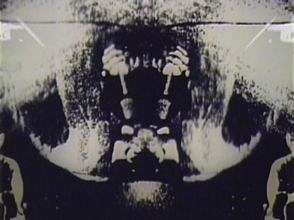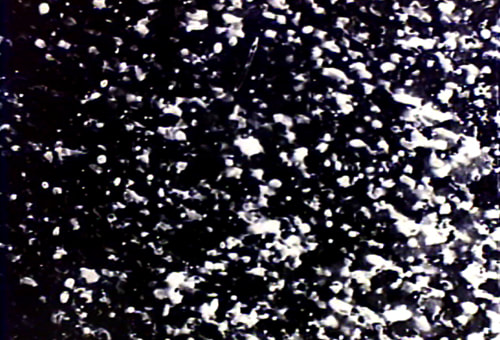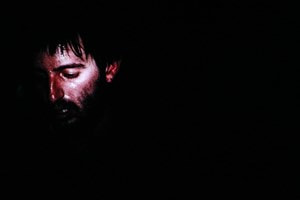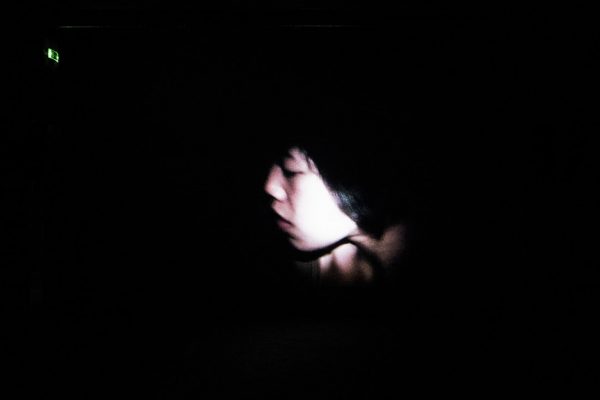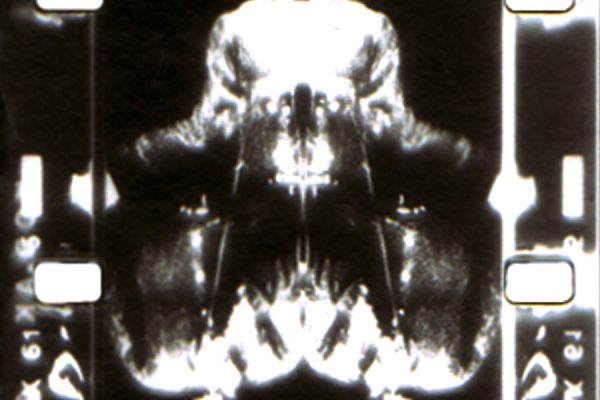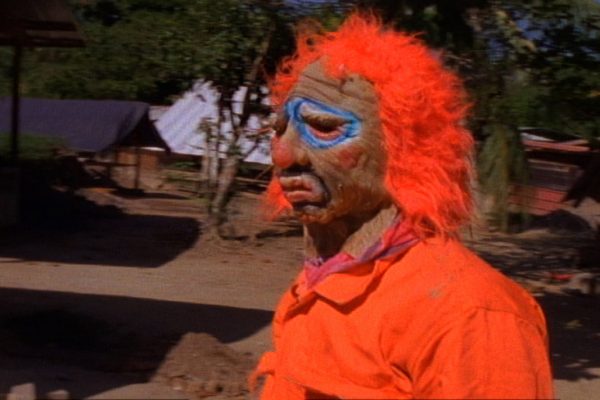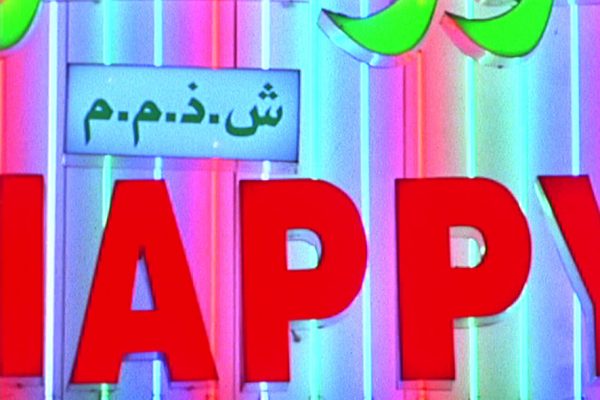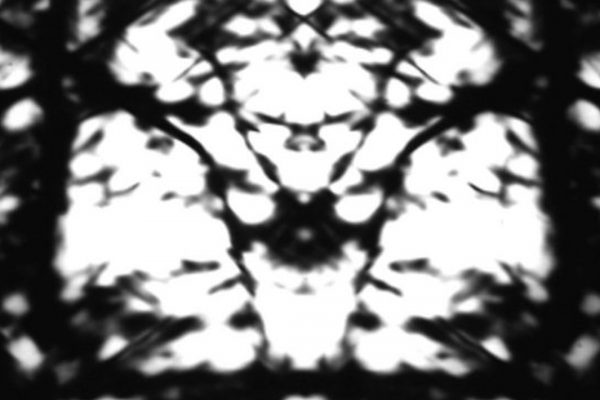Quand | When
22.04.2018 | 20h00
Où | Where
la lumière collective
7080, rue Alexandra, Montréal [QC]
Média | Media
16mm
En présence du cinéaste.
Billets | Tickets
7$ à la porte
“Watching a film by Russell means going on a nonnarrative, ritualized journey, one that short-circuits the visceral subjective charge of psychedelia with ethnographic protocols of visualization and objectification.” – Hila Peleg
Artiste, cinéaste et enseignant, Ben Russell construit une œuvre à la croisée de la performance, du cinéma expérimental et de l’impulsion ethnographique. Il puise son inspiration dans le travail des pionniers du cinéma et l’observation des communautés humaines.
BEN RUSSELL
Artiste, cinéaste et enseignant, Ben Russell construit une œuvre à la croisée de la performance, du cinéma expérimental et de l’impulsion ethnographique. Il puise son inspiration dans le travail des pionniers du cinéma et l’observation des communautés humaines.
Né à Chicago en 1975, Ben Russell est un artiste vidéaste américain qui s’interroge sur la place du spectateur et les performances rituelles. Il reçoit en 2008 un Guggenheim Award, et ses films ont fait l’objet d’expositions et de projections dans des lieux aussi divers que le Centre Pompidou, le Museum of Modern Arts ou un monastère belge du XVIIème siècle. Passionné par le cinéma expérimental, il a lancé la programmation de films et de performances à travers son Magic Lantern Cinema (une dénomination qui rend hommage au mythique cinéaste Kenneth Anger). – [Portail du film documentaire]
“Ben Russell – filmmaker, artist, curator – challenges conventions of documentary representation from within to produce intense, hypnotic, and, at times, hallucinating experiences. His curatorial work follows his filmmaking, which unfolds between experimental cinema and a form of speculative ethnography; he calls it ‘psychedelic ethnography.’
Watching a film by Russell means going on a nonnarrative, ritualized journey, one that short0circuits the visceral subjective charge of psychedelia with ethnographic protocols of visualization and objectification. The particular power of his filmic work lies in underscoring the affinities and differences to be found between these two different states. An experience that he forges, on the one hand, through examining the cinematic apparatus itself and its potential for immersion and mimetic identification, and, on the other, but the very subjects and subject matter of his films, which often travers the liminal and engage in altered states of consciousness and in secular practices of ritual and trance. ‘Transformative experiences,’ Russell says, ‘go hand in hand with critical awareness of cinematic devices and their historically cded limitations.’
Born in 1975 in Massachussetts, Russell now lives in Los Angeles. He became known through his series Trypps (2005-10), in which he first worked with the physical experience of noise music. Nevertheless he quickly moved on ‘to include the various poles of action painting, avant-garde cinema, portraiture, stand-up comedy, global capitalism, and trance dance à la Jean Rouch,’ as he notes. Several feature-length films, installations, live performances, and short films have followed. And, as the founder of the Magic lantern screening series (among many others), Russell has conceived of and organized over one hundred thematic film and video programs…” – [Hila Peleg, documenta 14]
TRYPPS TRYPPS TRYPPS TRYPPS TRYPPS TRYPPS TRYPPS
20h00 | 73 min
“Avec pour ligne directrice un ancien mot anglais, la série de films 16mm (en majorité) est construite de manière conceptuelle autour des sens possibles que les titres suscitent – des voyages physiques, des aventures psychédéliques et une expérience phénoménologique du monde. La série débute en 2005 par une tentative vaine de faire du cinéma un miroir au travers d’une captation en direct et incarnée de la scène de musique noise en Providence, à Rhode Island. Rapidement, le langage formel et critique propre aux films TRYPPS s’est ouvert à différentes sphères tel que l’action painting, le cinéma d’avant-garde, la portraiture, le stand-up, le capitalisme global et la danse-transe à la Jean Rouch. Alors que la forme des oeuvres varient radicalement, saisies dans leur ensemble, elles peuvent être considérées comme des oeuvres “d’ethnographie psychédélique” – une pratique qui a pour but d’approfondir la connaissance du concept de soi, un mouvement dont le voyage qui mène à la compréhension est à la fois le moyen et la fin.” – [Ben Russell]
“Using a fabricated Old English word as its guiding principle, this series of (mostly) 16mm films is conceptually organized around the possible meanings that its title elicits – physical voyages, psychedelic journeys, and a phenomenological experience of the world. Begun in 2005 in a somewhat vain attempt to hold cinema up as a mirror to the live and fully embodied reception of the crazy noise music scene in Providence, Rhode Island, the TRYPPS films quickly expanded their formal and critical language to include the various poles of action painting, avant-garde cinema, portraiture, stand-up comedy, global capitalism, and trance-dance à la Jean Rouch. While the form of these works
varies radically from one to the next, when taken as a whole they can be seen to enunciate what their maker calls “psychedelic ethnography” – a practice whose aim is a knowledge of the Self/self, a movement towards understanding in which the trip is both the means and the end.”- [Ben Russell]
- BLACK AND WHITE TRYPPS NUMBER ONE
- BLACK AND WHITE TRYPPS NUMBER TWO
- BLACK AND WHITE TRYPPS NUMBER THREE
- BLACK AND WHITE TRYPPS NUMBER FOUR
- TRYPPS #5 (DUBAI)
- TRYPPS #6 (MALOBI)
- TRYPPS #7 (BADLANDS)
- RIVER RITES
2005 | 16mm | silent | b&w | 6 min
Un film op-art psychédélique qui fait référence aux films peints de la tradition du cinéma d’avant-garde tout en proposant quelque chose de radicalement différent. L’hypnose est imminente. – [Light Cone]
“A night sky fills with light shimmers and flecks, surface markings, heavenly bodies. It’s an ocean, a well, a screen, a mirror, a portal. Blackness/void cluttered by growing ephemera. Dark reaches of outer and inner space gradually sifts through shards of granite and diamonds. The mind races as the material becomes greater and more frenetic, reaching a nearly audibly grinding pitch of excitement, flurry, and instantaneous infinity that ebbs at first and then maintains. Flashes of color emerge or are imagined. Chaotic
flickering of dancing peasant girls and violently twisting astronaut helmets. Layers of sea slime over undulating life forms. Bonfires and celebration. Explosions, construction. Holocausts. Primordial ooze, modern civilization. Ages and seconds. Floating heads circle kaleidoscopic bursts of shiny beads. Everything everywhere twists, forces through, transforms into, overlaps everything else. Seashells, snow, jewels, static, planets, mitochondria, trash, leaves. Rings, flowers, stars, hair, ghosts, comets, cartoons, demons. Icebubblesinstrumentscats marblestwigsfireflie spinwheelsinsectscraters.
Buzzing. Reeling….. flfkkkkk###################################################################################################Overkill. Birth/ Death. Moment by moment, symmetrical - organized like geometry, like Muslim rugs, like math.” – [JT Rogstad, The International Exposition (TIE)]
2006 | 16mm | silent | b&w | 8 min
“Deux sortes de renversement en jeu impliquant à la fois le noir et blanc, ainsi que la réflexion et le chevauchement.” – [Light Cone]
”Ben Russell continues his initial impulse for the series, the exploration of “naturally-derived psychedelia”, with this cadenced phantasmagoria of negative imagery and negative space. The tendrils of sharp white trees become osseous arteries against the black void of the sky. The spiraling spine of a massive tree collides against a spanning pan of a branch twined into two through a mirroring effect. Representation morphs into abstraction as the film becomes a study in density and fearful symmetry in the forest of sight.
By film’s end, the arboreal is left far behind as the film strip becomes an engulfing, vertiginous maw.” - [Chris Stults, Viennale 2009]
2007 | 35mm | sound | colour | 12 min
“Ce film est le troisième volet d’une série qui traite des phénomènes psychédéliques produits de manière naturelle. Tourné pendant une performance du groupe de noise-rock originaire du Rhode Island, Lightning Bolt, il documente la transformation de l’extase collective d’un public en un rite de transe du plus haut niveau spirituel – Black and White Trypps Number Three est un tableau cinématographique d’une extase séculaire qui rappelle les grandes toiles de l’Annonciation de Titien et de Caravage.” – [Michael Sicinski, Portail du film documentaire]
“Trypps Number Three transports the documented transcendence of Jean Rouch’s Les Maîtres Fous from the Hauka movement to a Lightning Bolt concert where overlapping bodies, swaying to noise rock, are framed in light beamed from the stage – we return to the models of Caravaggio or Garrel
- bodies effectively transformed into islands of individual gestures and expressions via a spotlight and lingering camera, before the film cryptically bends upon itself: henceforth the image (through slow-motion effect) and sound (through Joseph Grimm’s spacey drones) conspire to directly invoke the spectator into the raptures.” – [Mubarak Ali, Supposed Aura]
2008 | 16mm | sound| b&w | 10 min
“Utilisant des séquences d’un long métrage en 35mm avec l’acteur Américain Richard Pryor (récemment décédé), ce film est un test de Rorschach visuel.” -[Light Cone]
“Jesus Christ, look at the white people, rushing back. White people don’t care, Jack…” – [Richard Pryor]
“Using a 35mm strip of motion picture slug featuring the recently deceased American comedian Richard Pryor, this extended Rorschach assault on the eyes moves out of a flickering chaos created by incompatible film gauges into a punchline involving historically incompatible racial stereotypes.” – [Ben Russell]
2008 | 16mm | silent | 3 min
“APP APPAP APP APAPPAP APP APP APP APAPPAPAPPAP APPAP APP”
“Une sémiotique du capital, du bonheur, et la phénoménologie sous les néons clignotants du capitalisme.” – [Light Cone]
“APP APPAP APP APAPPAP APP APP APP APAPPAPAPPAP APPAP APP”
“A radically restricted camera was similarly fixed on half of a neon sign in Ben Russell’s Trypps #5 (Dubai) (2008), which displayed the letters “APP” and only half of a “Y” in an erratic, discontinuous pulse. If the mention of Dubai conjures a cosmopolitan skyline, Russell renounces the possibility of seeing even a single street. As Mark McElhatten writes in the program notes, “Happiness is always, incomplete,” and here, in a critique that Debord may have particularly appreciated, it’s a brightly colored sign for a shop that promises everything but sells nothing.” – [Genevie Yu, Reverse Shot]
2018 | HD | sound | colour | 3 min
”Halloween en Amérique du Sud selon Ben Russell. Un concert de Lightning Bolt dans la jungle, au cœur d’un village maroon, Malobi, au Surinam, est l’occasion d’une intrigante cérémonie au dieu Pan. Danses, processions de masques et possessions, filmées en 16 mm, caméra à l’épaule, son direct et plan-séquence, passages dans le même mouvement de l’un au multiple, du général au particulier, du moderne au traditionnel, Trypps # 6 est un hommage à la ciné-transe de Jean Rouch.” – [Yann Lardeau, Portail du film documentaire]
“From the Maroon village of Malobi in Suriname, South America, this single-take film offers a strikingly contemporary take on a Jean Rouch classic. It’s Halloween at the Equator, Andrei Tarkovsky for the jungle set.” – [Ben Russell]
2010 | 16mm | 10 min
”Trypps #7 (Badlands) retrace, par une longue prise de vue intime, la défonce d’une jeune femme sous LSD dans le parc national Badlands puis finit par transformer les paysages désertiques en une abstraction formelle et psychédélique. Touchant au romantisme, au sublime, à l’expérience phénoménologique et au spiritualisme non religieux, l’œuvre poursuit l’enquête unique de Russell sur les possibilités du cinéma comme lieu de transcendance.”- [Michael Green, MCA Chicago, Portail du documentaire]
“Trypps #7 (Badlands) charts, through an intimate long-take, a young woman’s LSD trip in the Badlands National Park before descending into a psychedelic, formal abstraction of the expansive desert landscape. Concerned with notions of the romantic sublime, phenomenological experience, and secular spiritualism, the work continues Russell’s unique investigation into the possibilities of cinema as a site for transcendence.” - [Michael Green, Museum of Contemporary Art Chicago]
2011| 16mm | 11 min
“Les animistes reconnaissent que le monde est rempli d’individus dont certains sont humains et que la vie est toujours vécue dans un rapport avec d’autres.” – [Graham Harvey, Animism]
Une danse de transe, l’implosion de l’eau, une ciné-ligne tracée entre une possession laïque et des phénomènes religieux. Filmés en une seule prise sur un fleuve sacré du Haut Suriname, les secrets mineurs et quotidiens d’un animiste saramaccain nous sont révélés pendant que le temps lui-même se défait. Les rites sont les nouveaux Trypps – l’incarnation est notre Tout éternel. – [Ben Russell, Portail du film documentaire]
”Animists are people who recognize that the world is full of persons, some of whom are human, and that life is always lived in relationship with others.” – [Graham Harvey, Animism]
Trance dance and water implosion, a kino-line drawn between secular freak-outs and religious phenomena. Filmed in a single take at a sacred site on the Upper Suriname River, the minor secrets of a Saramaccan animist everyday are revealed as time itself is undone. Rites are the new Trypps – embodiment is our eternal everything. – [Ben Russell]



